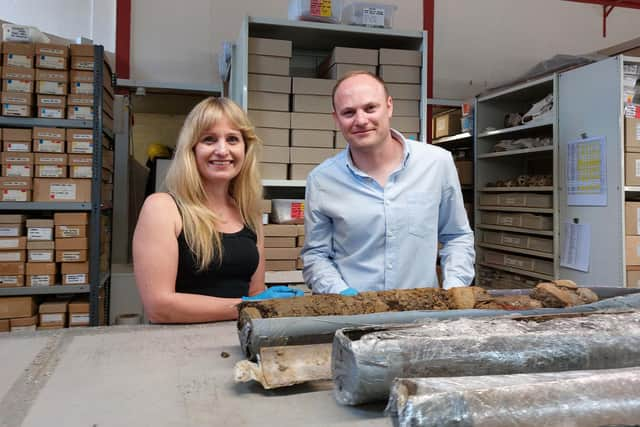Archaeologists reveal more about Sheffield's Norman castle built 900 years ago 'to see and be seen'
Findings from a borehole survey carried out last summer confirm that it was a motte-and-bailey castle in its earliest phase.
The castle – where Mary, Queen of Scots was held prisoner for 14 years – was badly damaged in the 1640s after falling to the Parlimentarians in the English Civil War.
Advertisement
Hide AdAdvertisement
Hide AdSince then it has been covered by multiple developments, most recently the cattle market, which was demolished in 2015. Sheffield Council wants to redevelop the area.


Archeologists have been looking at its earliest phase, when it was built between 1150 to 1170, on a bedrock promontory where the River Sheaf meets the River Don.
An Anglo-Norman baron, William de Lovetot is thought to have built a motte-and-bailey castle with a wooden keep on a raised area of ground called a motte, accompanied by a walled courtyard, or bailey, surrounded by a protective ditch and palisade.
The team of geoarchaeologists from Wessex Archaeology have been analysing core samples to work out what the landscape would have been like centuries ago.
Advertisement
Hide AdAdvertisement
Hide AdThey’ve found out more about the location of the ditch to the north east, where it exploited a former channel of the River Sheaf. Elsewhere it was cut into rock.
The analysis has also revealed in places the motte – the artificial earthwork mound the castle sat on - was around 50 metres in diameter – a “bog standard” size for castles of its type.
Milica Rajic, Infrastructure Director at Wessex Archaeology, said: “When William de Lovetot came and picked a place to build a castle he has chosen a geological outcrop that’s fairly high. He didn’t put the castle on any of the hills.
"Never underestimate the power of fashion or bling. It’s positioned very defensively on two rivers, but it is a Norman castle that is more to see and be seen.
Advertisement
Hide AdAdvertisement
Hide Ad"In 2018 we revealed that we had a motte-and-bailey castle, and last year’s survey confirmed we had the phase of the site which was the earliest.
"There would have been a wooden keep on top and it was constructed no later than the mid 12th century. Confirmation that there’s a motte and bailey castle is pretty exciting.”
The ditch which surrounded it was heavily polluted.
Ms Rajic said: "It wasn’t completely full of water and it certainly didn’t come from the Don or the Sheaf. When we looked at the sediments we found evidence that there were puddles and shallow water which was heavily polluted and coming from the houses and the town. All the pollution was draining into that ditch.
"It is why Mary Queen of Scots – apart from the fact that she was royal and wanted a certain type of respect – complained that it was extremely unpleasant place to be.”
Advertisement
Hide AdAdvertisement
Hide AdMary arrived at Sheffield Castle on 28 November 1570, aged 27. She was held prisoner by the 6th Earl of Shrewsbury at both Sheffield Manor Lodge and Sheffield Castle.
The investigations will feature on BBC Two’s Digging for Britain at 8pm on Sunday January 15.
